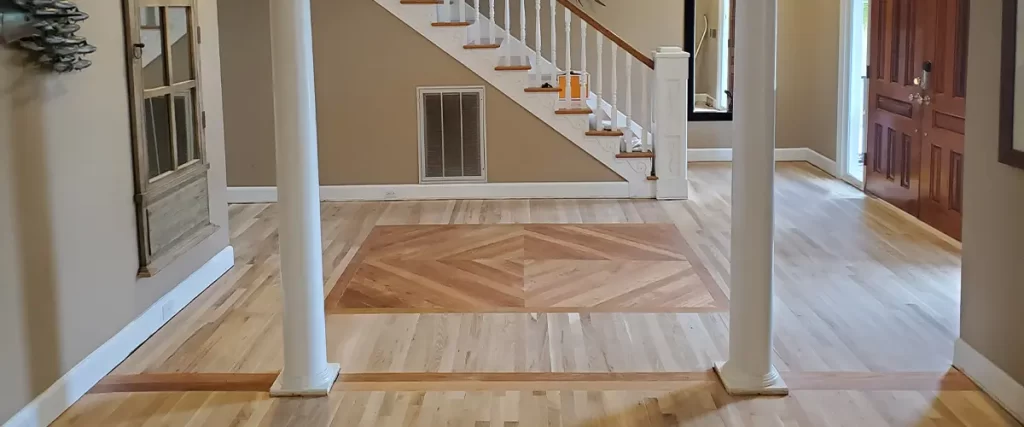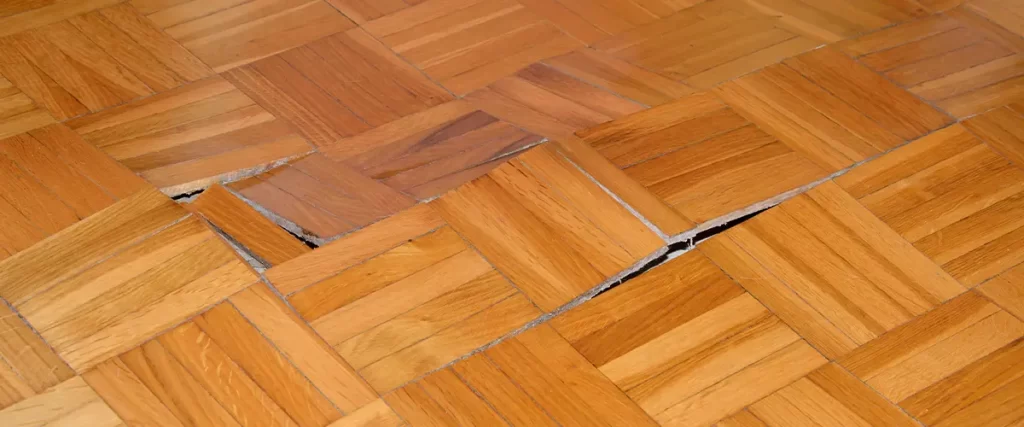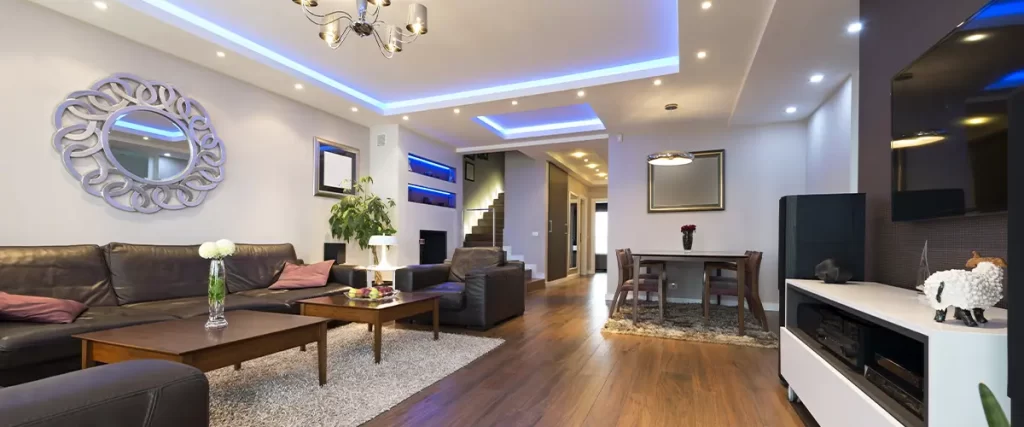Hardwood floor buckling is a frustrating problem that many homeowners face. If you’ve noticed your hardwood floors warping, lifting, or forming ridges, you’re not alone.
Buckled hardwood flooring is typically caused by moisture damage, improper installation, or subfloor issues. Ignoring the problem can lead to further damage and costly repairs, so it’s essential to understand the causes and solutions.
Whether you’re installing hardwood flooring for the first time or trying to fix a buckled floor, this guide will help you identify the issue, prevent future damage, and find the best repair techniques to restore your wood flooring.

Common Causes of Hardwood Floor Buckling
Excess Moisture
High humidity levels can cause wood planks to absorb moisture and expand, while water leaks from washing machines, plumbing issues, or heavy spills can result in warped boards. Additionally, improper ventilation in crawl spaces can trap moisture, leading to buckled wood floors over time.
Improper Installation
Failing to leave enough expansion gaps can prevent hardwood floors from adjusting to humidity changes, leading to potential issues over time. Installing flooring over a wet subfloor can cause the wood to expand and result in buckling.
Additionally, not following the manufacturer’s instructions may lead to stability problems, compromising the durability and performance of the flooring.
Subfloor Issues
Uneven subfloors can create pressure points that distort hardwood planks, pushing them out of shape. Additionally, moisture trapped beneath the floorboards can lead to warping and buckling over time, compromising the integrity of the flooring.
Choosing the wrong underlayment can further exacerbate the issue by causing imbalances in moisture content, ultimately affecting the durability and performance of the floor.
Signs That Your Hardwood Floors Are Buckling
Raised or lifted floorboards in the middle of the room, gaps between wood planks that weren’t there before, and cracking or creaking sounds when walking over certain areas can all be signs of an issue with your flooring.
Additionally, visible warping or waves in the floor and soft spots that suggest excessive moisture underneath are important indicators to watch for.

How to Prevent Hardwood Floor Buckling
To maintain hardwood floors, it’s essential to control humidity levels by keeping indoor humidity between 35-55% to prevent excessive expansion and contraction. Clean up water spills immediately to avoid moisture damage, and during installation, leave expansion gaps around walls and edges to allow for natural movement.
Using area rugs in high-traffic areas can help protect your floors from wear and moisture buildup. Proper ventilation is also key, so ensure good airflow in crawl spaces and basements. Additionally, regularly check for leaks in washing machines, sinks, and plumbing to prevent hidden water damage.
Repairing Buckled Hardwood Flooring
| Type of Buckling | Repair Method | Tools Needed |
| Minor buckling | Reduce humidity, apply weight to restore shape | Heavy object, dehumidifier |
| Moderate damage | Remove affected area, replace damaged boards | Pry bar, circular saw, replacement boards |
| Severe buckling | Reinstall entire floor, address subfloor moisture | Moisture meter, subfloor repair materials |
For extreme buckling, replacing the entire floor may be necessary. Always follow the manufacturer’s instructions for repairs to avoid further damage.
Best Manufacturers for Hardwood Flooring & Moisture-Resistant Finishes
If you’re considering new flooring or need materials for a repair, choosing a high-quality manufacturer is essential.
Top Hardwood Flooring Manufacturers:
- Bruce Hardwood – Provides durable, moisture-resistant solid hardwood floors for long-lasting results.
- Shaw Floors – Offers engineered wood flooring designed to resist humidity and moisture damage.
- Mohawk – Specializes in hardwood boards with protective finishes to prevent buckling.
- Pergo – Features laminated floors with waterproof technology.
- Mullican Flooring – Uses high-quality sealants and kiln-dried wood to minimize expansion.
FAQ: Hardwood Floor Buckling
What causes hardwood floors to buckle?
Excess moisture, improper installation, and subfloor issues can lead to buckling floorboards over time.
Can you fix buckled wood floors without replacing them?
Yes, minor buckling can sometimes be reversed by reducing moisture levels and applying weight to affected areas.
How can I prevent my wood floors from warping?
Maintain stable humidity levels, wipe up spills immediately, and allow for proper expansion gaps during installation.
Is buckled hardwood flooring covered by insurance?
It depends on the cause. Flood damage may be covered, but improper installation issues typically aren’t.
Can I repair buckled wood floors myself?
For minor buckling, you can try drying the area, but severe buckling requires professional repair.
How long does it take for a buckled floor to dry out?
It depends on humidity levels, but using a dehumidifier can speed up the process.
Should I replace buckled hardwood flooring?
If damage is extensive and affects the structural integrity, replacement may be the best option.
What’s the best flooring for high humidity areas?
Engineered wood or laminate floors are better suited for humid climates than solid hardwood floors.

Protecting Your Hardwood Floors from Buckling
Hardwood flooring is a beautiful and durable investment, but it requires proper maintenance to avoid buckling, warping, and moisture damage. By controlling humidity, addressing spills quickly, and ensuring proper installation, you can keep your floors looking great for years.
If your hardwood floorboards are showing signs of buckling, don’t wait – contact us at (843) 900-4880 today for professional hardwood flooring repair and installation!
